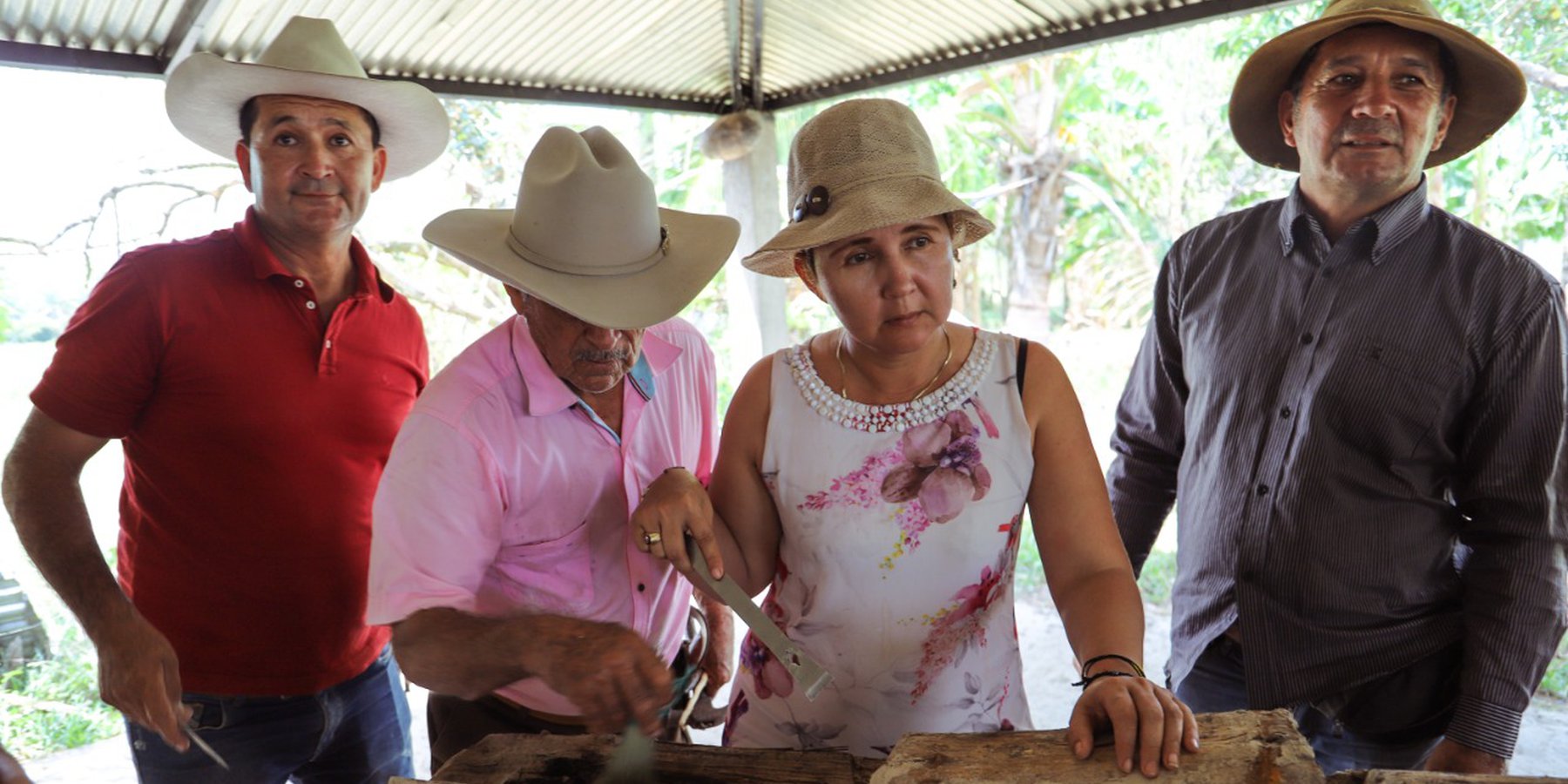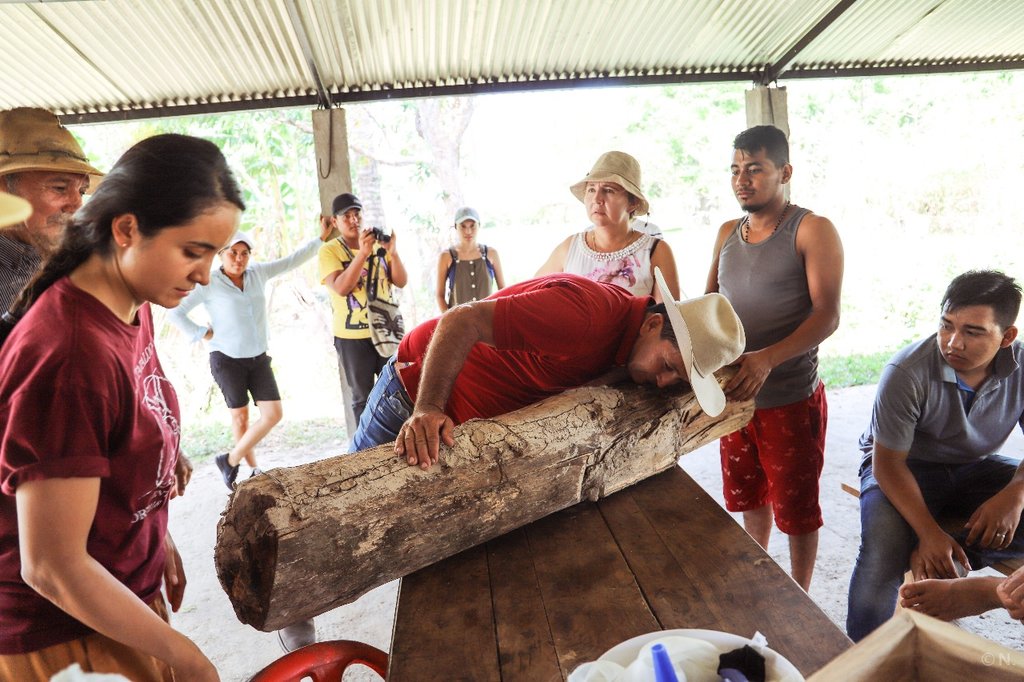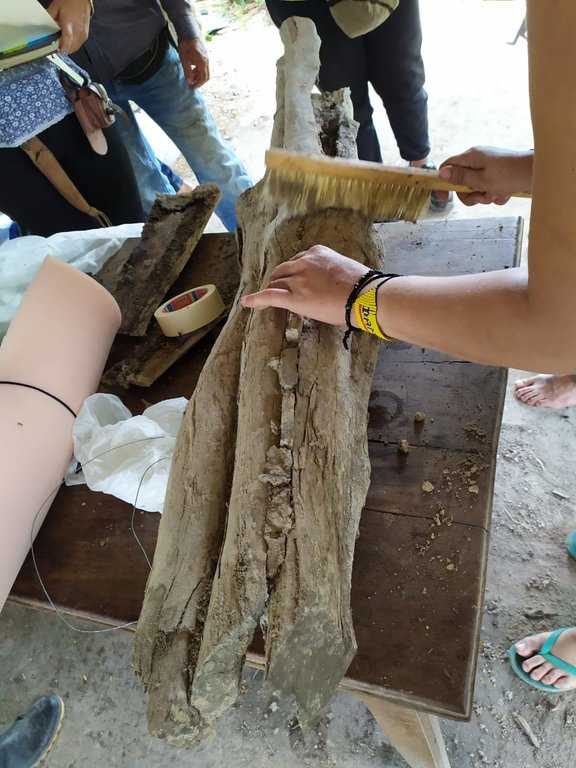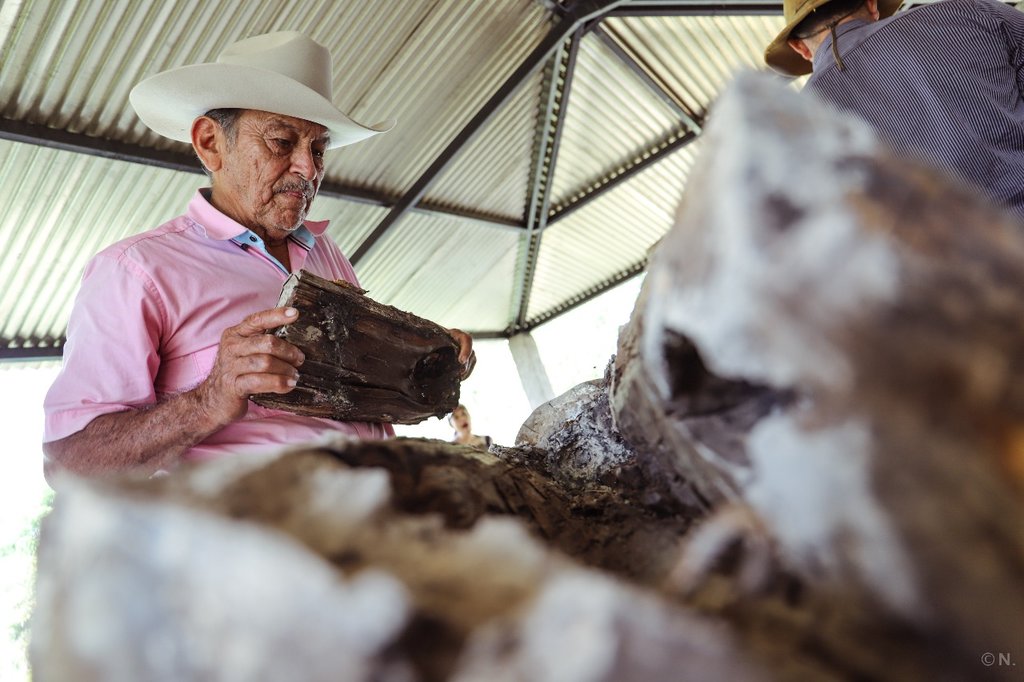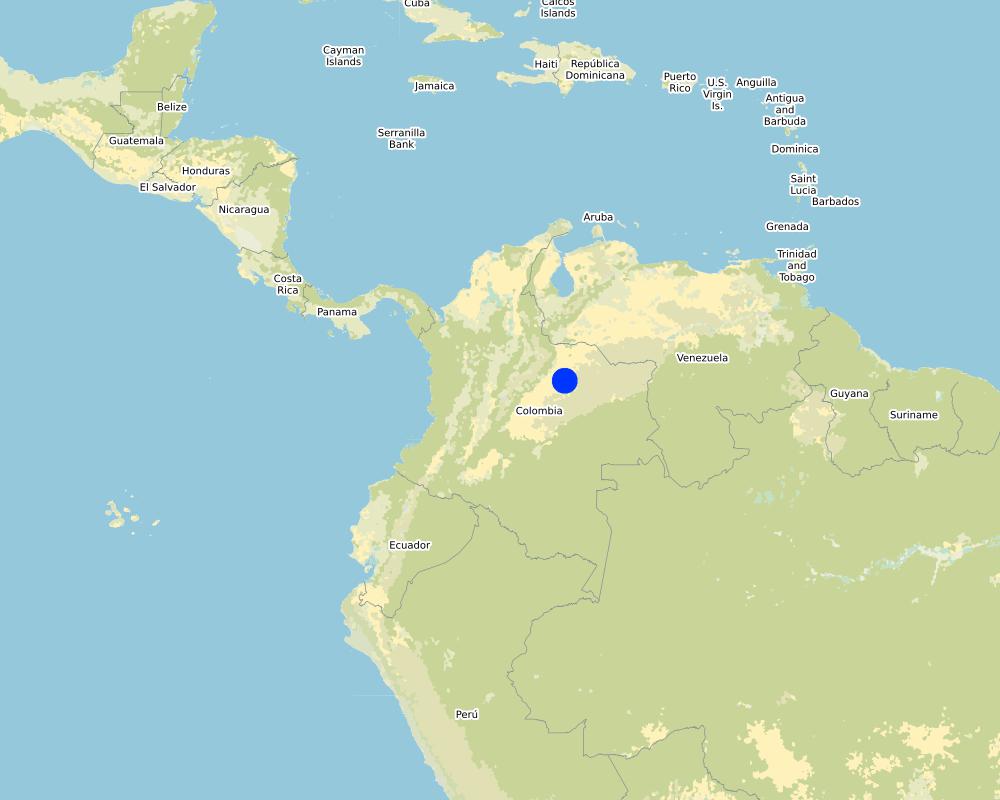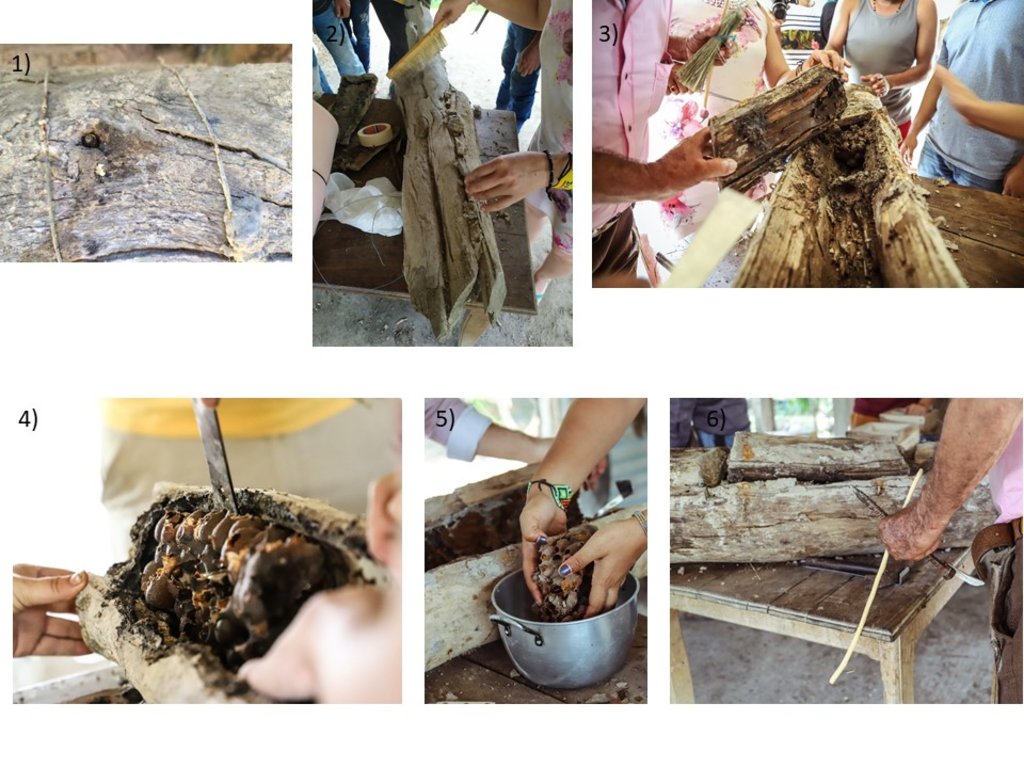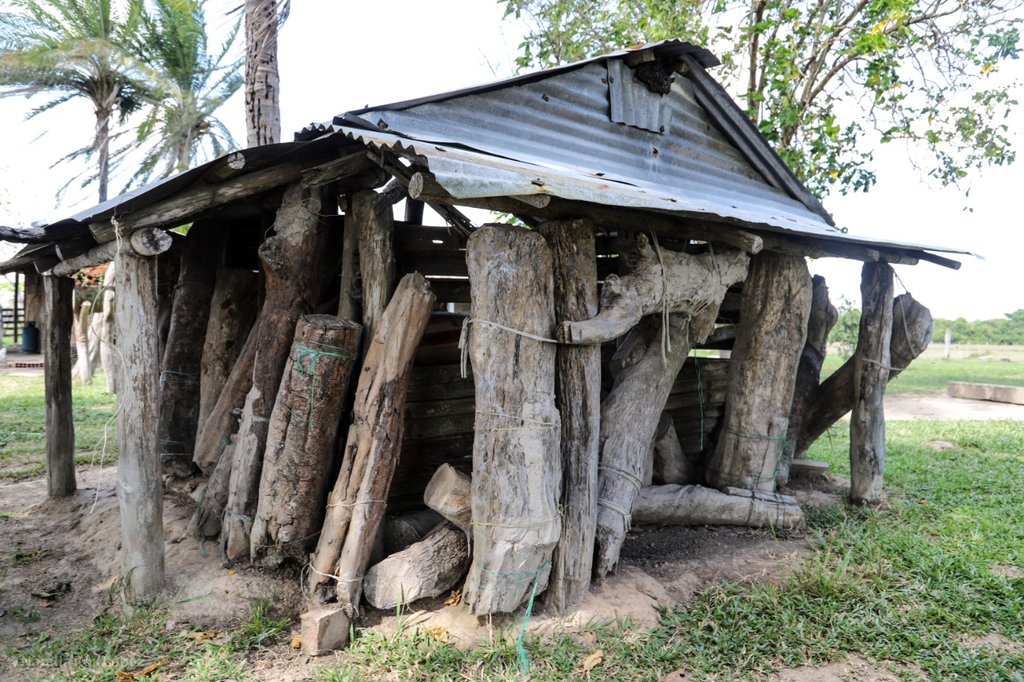Sustainable traditional native bee (Melipona favosa) keeping [ຄໍລົມເບຍ]
- ການສ້າງ:
- ປັບປູງ:
- ຜູ້ສັງລວມຂໍ້ມູນ: Beatriz Ramirez
- ບັນນາທິການ: Luisa F. Vega
- ຜູ້ທົບທວນຄືນ: Hanspeter Liniger
Cría de abeja mancita
technologies_5797 - ຄໍລົມເບຍ
ເບິ່ງພາກສ່ວນ
ຂະຫຍາຍທັງໝົດ ຍຸບທັງໝົດ1. ຂໍ້ມູນທົ່ວໄປ
1.2 ຂໍ້ມູນ ການຕິດຕໍ່ພົວພັນ ຂອງບຸກຄົນທີ່ສໍາຄັນ ແລະ ສະຖາບັນ ທີ່ມີສ່ວນຮ່ວມ ໃນການປະເມີນເອກກະສານ ເຕັກໂນໂລຢີ
ບັນດາຜູ້ຕອບແບບສອບຖາມທີ່ສໍາຄັນ ()
ຜູ້ນໍາໃຊ້ທີ່ດິນ:
Abril Héctor
Finca La Reforma
ຄໍລົມເບຍ
ຜູ້ນໍາໃຊ້ທີ່ດິນ:
Abril Héctor Frugo
Finca La Corocora
ຄໍລົມເບຍ
ຜູ້ນໍາໃຊ້ທີ່ດິນ:
Abril Damaris
Finca La Esmeralda
ຄໍລົມເບຍ
ຜູ້ນໍາໃຊ້ທີ່ດິນ:
Abril Boncieth
Finca Arbolitos
ຄໍລົມເບຍ
ຜູ້ນໍາໃຊ້ທີ່ດິນ:
Abril Héctor Daniel
Finca La Berraquera
ຄໍລົມເບຍ
ຊື່ໂຄງການ ທີ່ອໍານວຍຄວາມສະດວກ ໃນການສ້າງເອກກະສານ/ປະເມີນ ເຕັກໂນໂລຢີ (ຖ້າກ່ຽວຂ້ອງ)
Onsite and Offsite Benefits of SLMຊື່ສະຖາບັນ (ຫຼາຍສະຖາບັນ) ທີ່ອໍານວຍຄວາມສະດວກ ໃນການສ້າງເອກກະສານ / ປະເມີນ ເຕັກໂນໂລຢີ (ຖ້າກ່ຽວຂ້ອງ)
Centro de Estudios Ambientales de la Orinoquia- Asociación de Becarios de Casanare (ABC) - ຄໍລົມເບຍ1.3 ເງື່ອນໄຂ ກ່ຽວກັບ ການນໍາໃຊ້ຂໍ້ມູນເອກະສານ ທີ່ສ້າງຂື້ນ ໂດຍຜ່ານ ອົງການພາບລວມຂອງໂລກ ທາງດ້ານແນວທາງ ແລະ ເຕັກໂນໂລຢີ ຂອງການອານຸລັກ ທໍາມະຊາດ (WOCAT)
ຜູ້ປ້ອນຂໍ້ມູນ ແລະ ບຸກຄົນສຳຄັນ ທີ່ໃຫ້ຂໍ້ມູນ (ຫຼາຍ) ຍິນຍອມ ຕາມເງື່ອນໄຂ ໃນການນຳໃຊ້ຂໍ້ມູນ ເພື່ອສ້າງເປັນເອກກະສານຂອງ WOCAT:
ແມ່ນ
1.4 ແຈ້ງການວ່າ ດ້ວຍຄວາມຍືນຍົງຂອງ ເຕັກໂນໂລຢີ
ການນໍາໃຊ້ ເຕັກໂນໂລຢີ ດັ່ງກ່າວໄດ້ອະທິບາຍ ເຖິງບັນຫາ ກ່ຽວກັບ ການເຊື່ອມໂຊມຂອງດິນບໍ? ຖ້າບໍ່ດັ່ງນັ້ນ ມັນບໍ່ສາມາດ ຢັ້ງຢືນໄດ້ວ່າ ເປັນເຕັກໂນໂລຊີ ໃນການຄຸ້ມຄອງ ທີ່ດິນແບບຍືນຍົງ? :
ບໍ່ແມ່ນ
2. ການອະທິບາຍ ເຕັກໂນໂລຢີ ຂອງການຄຸ້ມຄອງ ທີ່ດິນແບບຍືນຍົງ
2.1 ຄໍາອະທິບາຍສັ້ນຂອງ ເຕັກໂນໂລຢີ
ການກຳໜົດຄວາມໝາຍ ຂອງເຕັກໂນໂລຢີ:
Native stingless bee keeping (Melipona favosa) protects bees and plants found in forest and savannah ecosystems to produce honey. In contrast to current destructive wild bee honey harvesting, members of the Abril family keep the traditional practice of capturing/rescuing wild nests, and adapt them so that honey can be extracted from the same nest for many years (up to 30 y) without killing the bees.
2.2 ການອະທິບາຍ ລາຍລະອຽດ ຂອງເຕັກໂນໂລຢີ
ການພັນລະນາ:
Native bee honey production in the floodable savannahs of the eastern Colombian Llanos (Orinoco River Basin), relies on stingless bees of the species Melipona favosa. These bees nest inside tree trunks. The main characteristics of the native bee keeping, as currently performed by three generations of the Abril Family, is that it is sustainable, promotes de conservation of native ecosystems, and as far as we know, constitutes the only sustainable and profitable direct use of local biodiversity in the floodable savannahs of the eastern Llanos in Colombia. Its sustainability is due to the adaptations and management of the nests, so that honey can be extracted without damaging the bees. On one hand, they know how to retrieve wild nests, either by rescuing them from rotten trees or the ground, or by cutting the branch with the nest, and then keeping its natural position at all times. Once at their houses, they will study the outside of the nest and listen to the bees inside the nest, with this information they will cut out a part of the tree trunk to create a window. Once opened, they verify the location of the honey and pollen pots and the broods. Then, they will reattach the cut part on to the trunk by using metal wire and sealing the edges with mud. The nest will be hanged with wire in the position it was originally found. Once on site they will check every day for the presence of the sentinel bee and bee activity. Furthermore, they only extract honey during the end of the dry season when bees have enough food reserves. For the extraction, they will reopen the previously cut window, and extract the honey and pollen pots, making sure enough are left behind so that bees can have access to food as well. The mean honey production from each nest is around the 750 ml- 1000 ml. Honey is kept for their own use and sold to some people for a fairly high price (30 dollars per 750 ml). The honey is mainly consumed as a medicinal product, and its low quantity makes it highly sought after. If someone requests it for sight issues, Héctor will extract the honey with a syringe so that it is as clear as possible.
The native bee keeping contributes to protect native bees, as the management of nests can keep them functional for up to 30 years. The Abril family members are well aware of the dependency between honey production and presence of native plants from where bees forage for nectar and pollen. Therefore, they avoid forest clearing and selectively keep shrubs in the grasslands to guarantee food supply for their bees. Also, they plant fruit trees such as guayaba (Psidium guajava) and arazá (Eugenia stipitata), that benefit the bees, which at the same time benefit pollination. Fruit production is mainly used for home use and very seldom they are sold. They also witness the negative impacts that agrochemical airborne dispersion from rice production in the neighbouring farms, have on wild bee populations. So far, their main concern is that they do not know how to multiply the nests.
2.3 ຮູບພາບຂອງເຕັກໂນໂລຢີ
2.4 ວິດີໂອ ເຕັກໂນໂລຢີ
ຄວາມຄິດເຫັນ, ຄໍາອະທິບາຍຫຍໍ້:
They are harvesting the honey from the pots throught the window, without affecting the brooding area. https://youtu.be/ZS_TbwV3fnw
ວັນທີ:
30/01/2020
ສະຖານທີ່:
Finca La Reforma, Vereda Los chochos, Municipality: Trinidad, Department: Casanare, Colombia
ຊື່ຂອງຜູ້ຖ່າຍວີດີໂອ:
Mildred Sossa
2.5 ປະເທດ / ເຂດ / ສະຖານທີ່ບ່ອນທີ່ ເຕັກໂນໂລຢີ ໄດ້ຮັບການນໍາໃຊ້ ແລະ ທີ່ຖືກປົກຄຸມດ້ວຍການປະເມີນຜົນ
ປະເທດ:
ຄໍລົມເບຍ
ພາກພື້ນ / ລັດ / ແຂວງ:
Casanare
ຂໍ້ມູນເພີ່ມເຕີມຂອງສະຖານທີ່:
Municipality: Trinidad, Vereda: Los Chochos
ໃຫ້ລະບຸ ການແຜ່ຂະຫຍາຍ ເຕັກໂນໂລຢີ:
- ນໍາໃຊ້ໃນຈຸດສະເພາະ / ແນໃສ່ນໍາໃຊ້ໃນພື້ນທີ່ຂະໜາດນ້ອຍ
ສ່ວນຫຼາຍສະຖານທີ່ຕັ້ງຂອງເຕັກໂນໂລຢີ ແມ່ນ ຢູ່ໃນເຂດພື້ນທີ່ສະຫງວນບໍ?
ບໍ່ແມ່ນ
ຄວາມຄິດເຫັນ:
All farms are neighbors and they all belong to the Abril family members (Father, two sons and a daughter)
Map
×2.6 ວັນທີໃນການຈັດຕັ້ງປະຕິບັດ
ຖ້າຫາກວ່າ ບໍ່ຮູ້ຈັກ ປີທີ່ຊັດເຈນ ແມ່ນໃຫ້ປະມານ ວັນທີເອົາ:
- 10-50 ປີ ຜ່ານມາ
2.7 ການນໍາສະເໜີ ເຕັກໂນໂລຢີ
ໃຫ້ລະບຸ ເຕັກໂນໂລຢີ ໄດ້ຖືກຈັດຕັ້ງປະຕິບັດຄືແນວໃດ?
- ເປັນສ່ວນໜື່ງຂອງລະບົບພື້ນເມືອງ (>50 ປີ)
ຄວາມຄິດເຫັນ (ປະເພດ ໂຄງການ ແລະ ອື່ນໆ):
Héctor Abril, has been working with this traditional systems since more than 50 years ago. The traditional system consists in creating a window implied o extract honey without damaging the nest. This knowledge has been passed on to his sons and daughter.
3. ການໃຈ້ແຍກ ເຕັກໂນໂລຢີ ໃນການຄຸ້ມຄອງ ດິນແບບຍືນຍົງ
3.1 ຈຸດປະສົງຫຼັກ (ຫຼາຍ) ຂອງເຕັກໂນໂລຢີ
- ປັບປຸງ ການຜະລິດ
- ການອະນຸລັກ ລະບົບນິເວດ
- ປົກປັກຮັກສາ / ການປັບປຸງຊີວະນາໆພັນ
- ສ້າງຜົນກະທົບ ທາງເສດຖະກິດ ທີ່ເປັນປະໂຫຍດ
3.2 ປະເພດການນໍາໃຊ້ທີ່ດິນ ໃນປະຈຸບັນ() ທີ່ເຕັກໂນໂລຢີ ໄດ້ຖືກນໍາໃຊ້
ການນຳໃຊ້ທີ່ດິນ ປະສົມພາຍໃນພື້ນທີ່ດຽວກັນ:
ບໍ່ແມ່ນ

ທົ່ງຫຍ້າລ້ຽງສັດ
ການລ້ຽງສັດແບບປ່ອຍ ຕາມທຳມະຊາດ:
- ແບບຂັງຄອກ
ປະເພດສັດ:
- ສັດໃຫ່ຍ-ງົວພັນຊີ້ນ
ແມ່ນການເຝືກຄຸ້ມຄອງ ການປູກພືດປະສົມປະສານ ກັບການລ້ຽງສັດບໍ່?
ບໍ່ແມ່ນ
ຜະລິດຕະພັນ ແລະ ການບໍລິການ:
- ຊີ້ນ
ສາຍພັນ:
ສັດໃຫ່ຍ-ງົວພັນຊີ້ນ
ນັບ:
150
ສາຍພັນ:
beekeeping, apiculture
ນັບ:
80

ປ່າໄມ້ / ປ່າ
- (ເຄິ່ງ) ປ່າໄມ້ທໍາມະຊາດ / ປ່າປູກໄມ້
(ເຄີ່ງ) ປ່າທໍາມະຊາດ / ປ່າປູກ: ລະບຸປະເພດການຄຸ້ມຄອງ:
- ການຄັດເລືອກຕັດ
- ການນຳໃຊ້ເຄື່ອງປ່າຂອງດົງ
ປະເພດ ( ເຄີ່ງ ) ປ່າທຳມະຊາດ:
- ພືດຜັກທຳມະຊາດ ໃນປ່າໄມ້ຜັດໃບເຂດຮ້ອນຊຸ່ມ
- ພືດຜັກທຳມະຊາດ ໃນປ່າເລົ່າເຂດຮ້ອນ
- Natural strips of gallery forest along savannah's rivers
ຄວາມຄິດເຫັນ:
The main economic activity of this group of farms is extensive cattle ranching on natural floodable savannhas (242 ha), but they all have bee keeping in their houses. The number 80 refers to the nest quantity. They preserve gallery forests (108 ha) and allow for fallows (28 ha) to develope near the houses for supplying nectar and pollen to the bees.
3.3 ການນຳໃຊ້ທີ່ດິນ ມີການປ່ຽນແປງຍ້ອນການຈັດຕັ້ງທົດລອງເຕັກໂນໂລຢີ ແມ່ນບໍ່?
ການນຳໃຊ້ທີ່ດິນ ມີການປ່ຽນແປງຍ້ອນການຈັດຕັ້ງທົດລອງເຕັກໂນໂລຢີ ແມ່ນບໍ່?
- ແມ່ນ (ກະລຸນາຕື່ມໃສ່ ຄຳຖາມຂ້າງລຸ່ມນີ້ກ່ຽວກັບການນຳໃຊ້ທີ່ດິນ ກ່ອນການທົດລອງເຕັກໂນໂລຢີ)
ການນຳໃຊ້ທີ່ດິນ ປະສົມພາຍໃນພື້ນທີ່ດຽວກັນ:
ບໍ່ແມ່ນ

ປ່າໄມ້ / ປ່າ
- (ເຄິ່ງ) ປ່າໄມ້ທໍາມະຊາດ / ປ່າປູກໄມ້
(ເຄີ່ງ) ປ່າທໍາມະຊາດ / ປ່າປູກ: ລະບຸປະເພດການຄຸ້ມຄອງ:
- ການນຳໃຊ້ເຄື່ອງປ່າຂອງດົງ
ປະເພດ ( ເຄີ່ງ ) ປ່າທຳມະຊາດ:
- ພືດຜັກທຳມະຊາດ ໃນປ່າໄມ້ຜັດໃບເຂດຮ້ອນຊຸ່ມ
- ພືດຜັກທຳມະຊາດ ໃນປ່າເລົ່າເຂດຮ້ອນ
ຄວາມຄິດເຫັນ:
The fact that their traditional practice allow for them to keep the bee nests in their houses for up to 30 years, means that they had to protect surrounding forests and allow for shrubland recovery nearby the house. Otherwise, they would just either collect honey directly in the field in a single destructive event or bring a couple of nests per year home and then extract honey in a destructive way.
3.4 ການສະໜອງນ້ຳ
ການສະໜອງນໍ້າ ໃນພື້ນທີ່ ທີ່ໄດ້ນໍາໃຊ້ ເຕັກໂນໂລຢີ:
- ນໍ້າຝົນ
ຄວາມຄິດເຫັນ:
The farms have some windmills for water extraction for the cattle ranching, but these are not used for the natural ecosystems that sustain the bees during the dry season.
3.5 ການນໍາໃຊ້ເຕັກໂນໂລຢີ ທີ່ຢູ່ໃນກຸ່ມການຄຸ້ມຄອງ ທີ່ດິນແບບຍືນຍົງ
- ການລ້ຽງເຜີ້ງ, ສັດນໍ້າ, ສັດປີກ, ກະຕ່າຍ, ມ້ອນໃໝ ແລະ ອື່ນໆ.
3.6 ມາດຕະການ ການຄຸ້ມຄອງ ທີ່ດິນແບບຍືນຍົງ ປະກອບດ້ວຍ ເຕັກໂນໂລຢີ

ມາດຕະການ ທາງດ້ານພືດພັນ
- V1: ເປັນໄມ້ຢືນຕົ້ນ ແລະ ການປົກຫຸ້ມຂອງໄມ້ພຸ່ມ

ມາດຕະການ ທາງດ້ານການຄຸ້ມຄອງ
- M1: ການປ່ຽນແປງ ປະເພດ ການນໍາໃຊ້ທີ່ດິນ
ຄວາມຄິດເຫັນ:
Bee keeping implies supplying the bees nectar and polen demands, thus, for sustaining their bees the Abril family is particularly keen on protecting their gallery forests and allow shrub regeneration. In addition, they are cultivating fruit trees (guayaba- Psidium guajava; arazá- Eugenia stipitata) near the houses, impplying a change in land cover from grazing land to fruit crops.
3.7 ປະເພດດິນເຊື່ອມໂຊມ ຫຼັກທີ່ໄດ້ນໍາໃຊ້ ເຕັກໂນໂລຢີ

ດິນເຊາະເຈື່ອນ ໂດຍນໍ້າ
- Wt: ການສູນເສຍຊັ້ນໜ້າດິນ / ການເຊາະເຈື່ອນຜິວໜ້າດິນ

ດິນເຊາະເຈື່ອນ ໂດຍລົມ
- ການສູນເສຍຊັ້ນໜ້າດິນ

ການເຊື່ອມໂຊມ ຂອງດິນ ທາງກາຍະພາບ
- Pc: ການອັດແໜ້ນ

ການເຊື່ອມໂຊມ ທາງຊີວະພາບ
- Bh: ການສູນເສຍ ທີ່ຢູ່ອາໃສ ຂອງສິ່ງທີ່ມີຊິວິດ
- Bs: ຄຸນນະພາບ / ການອັດແໜ້ນ ຂອງສາຍພັນຫຼຸດລົງ
ຄວາມຄິດເຫັນ:
Forest conservation and shrub recovery and fruit crops aid in the reduction of erosion by water during the wet season, and erosion by wind during the dry season. Forest conservation and shrub recovery and fruit crops reduce areas exposed to cattle trampling. Forest conservation, shrub recovery and fruit crops are likely important to protect soil fauna, to enhance the survival of bees and many other animal and plant species. A high density of pollinators is also important for natural vegetation and fruitting crop
3.8 ການປ້ອງກັນ, ການຫຼຸດຜ່ອນ, ຫຼືການຟື້ນຟູຂອງການເຊື່ອມໂຊມຂອງດິນ
ໃຫ້ລະບຸ ເປົ້າໝາຍ ເຕັກໂນໂລຢີ ທີ່ພົວພັນ ກັບຄວາມເຊື່ອມໂຊມຂອງດິນ:
- ປ້ອງກັນການເຊື່ອມໂຊມຂອງດິນ
ຄວາມຄິດເຫັນ:
On the one hand, they actively preserve the riparian forests because of their awareness of the relation between bee survival and honey production with forest cover. This reduces land degradation. On the other hand, surrounding their houses where they keep the bees they have planted trees and allowed for fallow areas to offer pollen and nectar to their bees, restoring land that has been previously used for cattle ranching
4. ຂໍ້ກໍາໜົດ, ກິດຈະກໍາການປະຕິບັດ, ວັດຖຸດິບ, ແລະຄ່າໃຊ້ຈ່າຍ
4.1 ເຕັກນິກ ໃນການແຕ້ມແຜນວາດ ເຕັກໂນໂລຢີ
ຄຸນລັກສະນະ ຂອງເຕັກນິກ (ທີ່ກ່ຽວຂ້ອງ ກັບການແຕ້ມແຜນວາດ ທາງດ້ານເຕັກນີກ):
This is too complex to draw, so we presented the sequence of extracting honey in a nest that has been modified so that the nest can live up to 30 years.
ຜູ້ຂຽນ:
Natalia Roa y Beatriz Ramírez
ວັນທີ:
30/01/2020
ຄຸນລັກສະນະ ຂອງເຕັກນິກ (ທີ່ກ່ຽວຂ້ອງ ກັບການແຕ້ມແຜນວາດ ທາງດ້ານເຕັກນີກ):
This is the housing for the nests. These nests have been collected or rescued from field. The youngest has 3 years the oldest has around 30 years. It is very important to keep the nests in the position they were originally found. The housing is to prevent direct sunshine and rainfall exposition.
ຜູ້ຂຽນ:
Natalia Roa
ວັນທີ:
30/01/2020
4.2 ຂໍ້ມູນທົ່ວໄປກ່ຽວກັບການຄິດໄລ່ປັດໃຈຂາເຂົ້າໃນການຜະລິດ ແລະ ມູນຄ່າອື່ນໆ
ລະບຸ ວິທີການ ຄຳໃຊ້ຈ່າຍ ແລະ ປັດໄຈນໍາເຂົ້າ ທີ່ໄດ້ຄິດໄລ່:
- ຕໍ່ຫົວໜ່ວຍ ທີ່ໄດ້ຈັດຕັ້ງປະຕິບັດ ເຕັກໂນໂລຢີ
ໃຫ້ລະບຸຫົວໜ່ວຍ:
bee nest
ລະບຸ ສະກຸນເງິນທີ່ໃຊ້ສໍາລັບ ການຄິດໄລ່ຄ່າໃຊ້ຈ່າຍ:
- USA
ລະບຸ ຄ່າຈ້າງ ຄ່າແຮງງານສະເລ່ຍ ຕໍ່ ວັນ:
$ 15
4.3 ການສ້າງຕັ້ງກິດຈະກໍາ
| ກິດຈະກໍາ | Timing (season) | |
|---|---|---|
| 1. | Wild nest recue or extraction and transport to the house | Depends on the finding, but it is preferred in the dry season where more floral resources are available |
| 2. | Opening of a window in the nest | A couple of days after being collected/recued |
| 3. | Locating the nest under housing | Just after the window opening |
4.4 ຕົ້ນທຶນ ແລະ ປັດໄຈຂາເຂົ້າທີ່ຈໍາເປັນໃນຈັດຕັ້ງປະຕິບັດ
| ລະບຸ ປັດໃຈ ນໍາເຂົ້າ ໃນການຜະລີດ | ຫົວໜ່ວຍ | ປະລິມານ | ຕົ້ນທຶນ ຕໍ່ຫົວໜ່ວຍ | ຕົ້ນທຶນທັງໝົດ ຂອງປັດໃຈຂາເຂົ້າ ໃນການຜະລິດ | % ຂອງຕົ້ນທຶນທັງໝົດ ທີ່ຜູ້ນໍາໃຊ້ທີ່ດິນ ໃຊ້ຈ່າຍເອງ | |
|---|---|---|---|---|---|---|
| ແຮງງານ | Two people for wild nest recue or extraction and transport to the house | day | 2.0 | 15.0 | 30.0 | 100.0 |
| ແຮງງານ | Opening of a window in the nest | day | 0.5 | 15.0 | 7.5 | 100.0 |
| ແຮງງານ | Housing construction (two people) | day | 2.0 | 15.0 | 30.0 | 100.0 |
| ແຮງງານ | 100.0 | |||||
| ອຸປະກອນ | Saw | unit | 1.0 | 20.0 | 20.0 | 100.0 |
| ອຸປະກອນ | Chissel | unit | 1.0 | 10.0 | 10.0 | 100.0 |
| ອຸປະກອນ | hammer | unit | 1.0 | 8.0 | 8.0 | 100.0 |
| ອຸປະກອນ | Metal wire | kilo | 0.5 | 11.0 | 5.5 | 100.0 |
| ອຸປະກອນ | Ax | unit | 1.0 | 20.0 | 20.0 | 100.0 |
| ວັດສະດຸກໍ່ສ້າງ | boles minimum 15 cm diamater and 2 m of height | boles | 4.0 | 8.0 | 32.0 | 100.0 |
| ວັດສະດຸກໍ່ສ້າງ | wood support 4 m long | unit | 4.0 | 6.0 | 24.0 | 100.0 |
| ວັດສະດຸກໍ່ສ້າງ | Roof laminas (3 m) | laminas | 3.0 | 18.0 | 54.0 | 100.0 |
| ວັດສະດຸກໍ່ສ້າງ | Nails | box | 2.0 | 9.0 | 18.0 | 100.0 |
| ຕົ້ນທຶນທັງໝົດ ໃນການຈັດຕັ້ງປະຕິບັດ ເຕັກໂນໂລຢີ | 259.0 | |||||
| ຄ່າໃຊ້ຈ່າຍທັງໝົດ ສຳລັບການສ້າງຕັ້ງເຕັກໂນໂລຢີ ເປັນສະກຸນເງີນໂດລາ | 259.0 | |||||
ຄວາມຄິດເຫັນ:
The construction of a bee nest house can hold up to 30 bee nests.
4.5 ບໍາລຸງຮັກສາ / ແຜນຈັດຕັ້ງປະຕິບັດ ກິດຈະກໍາ
| ກິດຈະກໍາ | ໄລຍະເວລາ / ຄວາມຖີ່ | |
|---|---|---|
| 1. | Checking the bee nests | daily |
| 2. | Harvesting honey | yearly |
| 3. | Seedling collection | monthly |
| 4. | tree nursery care | daily |
| 5. | planting trees | monthly |
4.6 ຄ່າໃຊ້ຈ່າຍ ແລະ ປັດໄຈນໍາເຂົ້າທີ່ຈໍາເປັນສໍາລັບການບໍາລຸງຮັກສາກິດຈະກໍາ / ແຜນປະຕິບັດ (ຕໍ່ປີ)
| ລະບຸ ປັດໃຈ ນໍາເຂົ້າ ໃນການຜະລີດ | ຫົວໜ່ວຍ | ປະລິມານ | ຕົ້ນທຶນ ຕໍ່ຫົວໜ່ວຍ | ຕົ້ນທຶນທັງໝົດ ຂອງປັດໃຈຂາເຂົ້າ ໃນການຜະລິດ | % ຂອງຕົ້ນທຶນທັງໝົດ ທີ່ຜູ້ນໍາໃຊ້ທີ່ດິນ ໃຊ້ຈ່າຍເອງ | |
|---|---|---|---|---|---|---|
| ແຮງງານ | Daily check per bee nest | day | 0.005 | 15.0 | 0.07 | 100.0 |
| ແຮງງານ | honey harvest per bee nest (2 people) | day | 1.0 | 15.0 | 15.0 | 100.0 |
| ແຮງງານ | Seedling collection | month | 2.0 | 15.0 | 30.0 | 100.0 |
| ແຮງງານ | Planting of fruitting trees | month | 2.0 | 15.0 | 30.0 | 100.0 |
| ອຸປະກອນ | Chissel | unit | 1.0 | 10.0 | 10.0 | 100.0 |
| ອຸປະກອນ | Broom | unit | 1.0 | 3.0 | 3.0 | 100.0 |
| ອຸປະກອນ | Hammer | unit | 1.0 | 8.0 | 8.0 | 100.0 |
| ອຸປະກອນ | Syringe | unit | 1.0 | 0.2 | 0.2 | 100.0 |
| ອຸປະກອນ | Empty glass bottles (750 ml) | unit | 70.0 | 0.4 | 28.0 | 100.0 |
| ອຸປະກອນ | Table | unit | 1.0 | 30.0 | 30.0 | 100.0 |
| ອຸປະກອນ | shovel | unit | 1.0 | 20.0 | 20.0 | 100.0 |
| ວັດສະດຸໃນການປູກ | Bags x 50 units | bag | 1.0 | 5.0 | 5.0 | 100.0 |
| ວັດສະດຸໃນການປູກ | Soil | sack | 4.0 | 6.0 | 24.0 | 100.0 |
| ຕົ້ນທຶນທັງໝົດ ທີ່ໃຊ້ໃນການບໍາລຸງຮັກສາ ເຕັກໂນໂລຢີ | 203.27 | |||||
| ຄ່າໃຊ້ຈ່າຍທັງໝົດ ສຳລັບການບົວລະບັດຮກສາເຕັກໂນໂລຢີ ເປັນສະກຸນເງີນໂດລາ | 203.27 | |||||
4.7 ປັດໄຈ ທີ່ສໍາຄັນ ທີ່ສົ່ງຜົນກະທົບ ຕໍ່ຄ່າໃຊ້ຈ່າຍ
ໃຫ້ອະທິບາຍ ປັດໃຈ ທີ່ສົ່ງຜົນກະທົບ ຕໍ່ຕົ້ນທຶນ ໃນການຈັດຕັ້ງປະຕິບັດ:
The way they manage the bee productive system is fairly cheap and most materials are already accessible within the farms.
5. ສະພາບແວດລ້ອມທໍາມະຊາດ ແລະ ມະນຸດ
5.1 ອາກາດ
ປະລິມານນໍ້າຝົນປະຈໍາປີ
- < 250 ມີລິແມັດ
- 251-500 ມີລິແມັດ
- 501-750 ມີລິແມັດ
- 751-1,000 ມີລິແມັດ
- 1,001-1,500 ມີລິແມັດ
- 1,501-2,000 ມີລິແມັດ
- 2,001-3,000 ມີລິແມັດ
- 3,001-4,000 ມີລິແມັດ
- > 4,000 ມີລິແມັດ
ໃຫ້ລະບຸສະເລ່ຍ ປະລິມານນໍ້າຝົນຕົກປະຈໍາປີ ເປັນມິນລິແມັດ (ຖ້າຫາກຮູ້ຈັກ):
1938.00
ຂໍ້ມູນສະເພາະ / ຄວາມເຫັນກ່ຽວກັບ ປະລິມານນໍ້າຝົນ:
highly monomodal seasonal rainfall with 4 months without rainfall (< 60 mm/ month), and 8 months with rainfall (>100 mm/ month) with June as the month with highest rainfall (> 300 mm)
ໃຫ້ລະບຸ ຊື່ສະຖານີ ອຸຕຸນິຍົມ ເພື່ອເປັນຂໍ້ມູນອ້າງອີງ:
Estación pluviométrica de Trinidad (IDEAM)
ເຂດສະພາບອາກາດກະສິກໍາ
- ເຄີ່ງຄວາມຊຸ່ມ
The highly seasonal rainfall, implies four months of extreme drought and at least 6 months of flooded areas. Both severely limit crop growth.
5.2 ພູມິປະເທດ
ຄ່າສະເລ່ຍ ຄວາມຄ້ອຍຊັນ:
- ພື້ນທີ່ຮາບພຽງ (0-2%)
- ອ່ອນ (3-5 %)
- ປານກາງ (6-10 %)
- ມ້ວນ (11-15 %)
- ເນີນ(16-30%)
- ໍຊັນ (31-60%)
- ຊັນຫຼາຍ (>60%)
ຮູບແບບຂອງດິນ:
- ພູພຽງ / ທົ່ງພຽງ
- ສັນພູ
- ເປີ້ນພູ
- ເນີນພູ
- ຕີນພູ
- ຮ່ອມພູ
ເຂດລະດັບສູງ:
- 0-100 ແມັດ a.s.l.
- 101-500 ແມັດ a.s.l.
- 501-1,000 ແມັດ a.s.l.
- 1,001-1,500 ແມັດ a.s.l.
- 1,501-2,000 ແມັດ a.s.l.
- 2,001-2,500 ແມັດ a.s.l.
- 2,501-3,000 ແມັດ a.s.l.
- 3,001-4,000 ແມັດ a.s.l.
- > 4,000 ແມັດ a.s.l.
ໃຫ້ລະບຸ ເຕັກໂນໂລຢີ ທີ່ໄດ້ຖືກນຳໃຊ້:
- ບໍ່ກ່ຽວຂ້ອງ
ຄຳເຫັນ ແລະ ຂໍ້ມູນສະເພາະ ເພີ່ມເຕີມ ກ່ຽວກັບ ພູມີປະເທດ:
This is a low elevation flat area. Overall the floodable savannahs are concave but microtopography has primarily concave areas (bajos) with a lower extent of convex areas (bancos).
5.3 ດິນ
ຄວາມເລິກ ຂອງດິນສະເລ່ຍ:
- ຕື້ນຫຼາຍ (0-20 ຊັງຕີແມັດ)
- ຕື້ນ (21-50 ຊຕມ)
- ເລີກປານກາງ (51-80 ຊຕມ)
- ເລິກ (81-120 ຊມ)
- ເລິກຫຼາຍ (> 120 cm)
ເນື້ອດິນ (ໜ້າດິນ):
- ປານກາງ (ດິນໜຽວ, ດິນໂຄນ)
ເນື້ອດິນ (ເລິກຈາກໜ້າດິນ ລົງໄປຫຼາຍກວ່າ 20 ຊັງຕິແມັດ):
- ປານກາງ (ດິນໜຽວ, ດິນໂຄນ)
- ບາງລະອຽດ / ໜັກ (ໜຽວ)
ຊັ້ນອິນຊີວັດຖຸ ເທິງໜ້າດິນ:
- ຕໍາ່ (<1 %)
ຖ້າເປັນໄປໄດ້ ແມ່ນໃຫ້ຕິດຄັດ ການພັນລະນາດິນ ຫຼື ຂໍ້ມູນສະເພາະຂອງດິນ, ຕົວຢ່າງ, ຄຸນລັກສະນະ ປະເພດຂອງດິນ, ຄ່າຄວາມເປັນກົດ / ເປັນດ່າງຂອງດິນ, ສານອາຫານ, ດິນເຄັມ ແລະ ອື່ນໆ.
In the seasonally floodable savannhas there are three main soil types: 1) Clayey sediments, 2) fine and coarse alluvial sediments, and 3) lime and sand eolic deposits. Soil description is based on the 1:100.000 scale Casanare soil study, by the National Geographical Institute Agustín Codazzi.
5.4 ມີນໍ້າ ແລະ ຄຸນນະພາບ
ການມີນໍ້າ ເທິງໜ້າດິນ:
ປານກາງ
ຄຸນນະພາບນໍ້າ (ບໍ່ມີການບໍາບັດ):
ບໍ່ມີນໍ້າດື່ມ (ຮຽກຮ້ອງໃຫ້ມີການບຳບັດນ້ຳ)
ມີບັນຫາ ກ່ຽວກັບນໍ້າເຄັມບໍ່?
ບໍ່ແມ່ນ
ເກີດມີນໍ້າຖ້ວມ ໃນພື້ນທີ່ບໍ່?
ແມ່ນ
ເປັນປົກກະຕິ:
ເລື້ອຍໆ
ຄວາມຄິດເຫັນ ແລະ ຂໍ້ກໍານົດ ເພີ່ມເຕີມ ກ່ຽວກັບ ຄຸນນະພາບ ແລະ ປະລິມານ ຂອງນ້ຳ:
Drinking water is usually provided by ground water year round. During the wet season there is a generalized flood, and during the dry season there is severe drought. Thus, the water table level goes from surface to deeper than 9 m.
5.5 ຊີວະນາໆພັນ
ຄວາມຫຼາກຫຼາຍ ທາງສາຍພັນ:
- ສູງ
ຄວາມຫຼາກຫຼາຍ ທາງດ້ານ ທີ່ຢູ່ອາໃສ ຂອງສິ່ງທີ່ມີຊີວິດ:
- ສູງ
ຄວາມຄິດເຫັນ ແລະ ລັກສະນະສະເພາະ ເພີ່ມເຕີມກ່ຽວກັບ ຊີວະນາໆພັນ:
Habitats include: Gallery/riparian forest, isolated tree islands (matas de monte), seasonally flooded savannhas, wetlands.
Reported biodiversity for the seasonally floodable savannahs is: 183 spp of mammals, 507 spp of birds, 108 spp of anphibians, 119 spp of reptiles, 567 spp of fish, 1479 spp of plants (Mora-Fernández et al., 2015).
5.6 ຄຸນລັກສະນະ ຂອງຜູ້ນໍາໃຊ້ທີ່ດິນ ທີ່ໄດ້ນໍາໃຊ້ເຕັກໂນໂລຢີ
ຢູ່ປະຈຳ ຫຼື ເຄື່ອນຍ້າຍຕະຫຼອດ:
- ບໍ່ເຄື່ອນໄຫວ
ລະບົບ ການຕະຫຼາດ ແລະ ຜົນຜະລິດ:
- ປະສົມປົນເປ( ກຸ້ມຕົນເອງ/ເປັນສິນຄ້າ)
ລາຍຮັບ ທີ່ບໍ່ໄດ້ມາຈາກ ການຜະລິດ ກະສິກໍາ:
- ໜ້ອຍກ່ວາ 10 % ຂອງລາຍຮັບທັງໝົດ
ລະດັບຄວາມຮັ່ງມີ:
- ທຸກຍາກ
ບຸກຄົນ ຫຼື ກຸ່ມ:
- ບຸກຄົນ / ຄົວເຮືອນ
ລະດັບ ການຫັນເປັນກົນຈັກ:
- ການໃຊ້ແຮງງານຄົນ
- ສັດລາກແກ່
ເພດ:
- ຜູ້ຍິງ
- ຜູ້ຊາຍ
ອາຍຸ ຂອງຜູ້ນໍາໃຊ້ທີ່ດິນ:
- ໄວກາງຄົນ
- ຜູ້ສູງອາຍຸ
ໃຫ້ລະບຸ ຄຸນລັກສະນະ ຂອງຜູ້ນໍາໃຊ້ທີ່ດິນ:
All the land user's reported here are family members.
5.7 ເນື້ອທີ່ສະເລ່ຍຂອງດິນ ທີ່ຜູ້ນຳໃຊ້ທີ່ດິນ ໃຊ້ເຮັດເຕັກໂນໂລຢີ
- <0.5 ເຮັກຕາ
- 0.5-1 ເຮັກຕາ
- 1-2 ເຮັກຕາ
- 2-5 ເຮັກຕາ
- 5-15 ເຮັກຕາ
- 15-50 ເຮັກຕາ
- 50-100 ເຮັກຕາ
- 100-500 ເຮັກຕາ
- 500-1,000 ເຮັກຕາ
- 1,000-10,000 ເຮັກຕາ
- > 10,000 ເຮັກຕາ
ຖືໄດ້ວ່າ ເປັນຂະໜາດນ້ອຍ, ກາງ ຫຼື ໃຫຍ່ (ອີງຕາມເງື່ອນໄຂ ສະພາບຄວາມເປັນຈິງ ຂອງທ້ອງຖີ່ນ)? :
- ຂະໜາດນ້ອຍ
- ຂະໜາດກາງ
ຄວາມຄິດເຫັນ:
For the area 30 ha farms are very small, whereas 200 ha is small-medium. This is considering that farms in this region of colombia have on average 700 ha.
5.8 ເຈົ້າຂອງທີ່ດິນ, ສິດໃຊ້ທີ່ດິນ, ແລະ ສິດທິການນໍາໃຊ້ນໍ້າ
ເຈົ້າຂອງດິນ:
- ບຸກຄົນ, ບໍ່ມີຕໍາແໜ່ງ
ສິດທິ ໃນການນໍາໃຊ້ທີ່ດິນ:
- ບຸກຄົນ
ສິດທິ ໃນການນໍາໃຊ້ນໍ້າ:
- ບຸກຄົນ
ສິດນຳໃຊ້ທີ່ດິນ ແມ່ນ ອີງໃສ່ລະບົບກົດໝາຍແບບດັ້ງເດີມບໍ?
ແມ່ນ
ລະບຸ ຊະນິດ:
They are in the process of gaining rights, given the farms have been theirs for more than 50 years.
5.9 ການເຂົ້າເຖິງການບໍລິການ ແລະ ພື້ນຖານໂຄງລ່າງ
ສຸຂະພາບ:
- ທຸກຍາກ
- ປານກາງ
- ດີ
ການສຶກສາ:
- ທຸກຍາກ
- ປານກາງ
- ດີ
ການຊ່ວຍເຫຼືອ ດ້ານວິຊາການ:
- ທຸກຍາກ
- ປານກາງ
- ດີ
ການຈ້າງງານ (ຕົວຢ່າງ, ການເຮັດກິດຈະກໍາອື່ນ ທີ່ບໍ່ແມ່ນ ການຜະລິດກະສິກໍາ):
- ທຸກຍາກ
- ປານກາງ
- ດີ
ຕະຫຼາດ:
- ທຸກຍາກ
- ປານກາງ
- ດີ
ພະລັງງານ:
- ທຸກຍາກ
- ປານກາງ
- ດີ
ຖະໜົນຫົນທາງ ແລະ ການຂົນສົ່ງ:
- ທຸກຍາກ
- ປານກາງ
- ດີ
ການດື່ມນໍ້າ ແລະ ສຸຂາພິບານ:
- ທຸກຍາກ
- ປານກາງ
- ດີ
ການບໍລິການ ທາງດ້ານການເງິນ:
- ທຸກຍາກ
- ປານກາງ
- ດີ
ຄວາມຄິດເຫັນ:
These farms are in fairly remote area with poor access roads, there is a rural school but for the other services people have to travel for at least 2 hours by car to the closest urban center.
6. ຜົນກະທົບ ແລະ ລາຍງານສະຫຼຸບ
6.1 ການສະແດງຜົນກະທົບ ພາຍໃນພື້ນທີ່ ທີ່ໄດ້ຈັດຕັ້ງປະຕິບັດ ເຕັກໂນໂລຢີ
ຜົນກະທົບທາງເສດຖະກິດສັງຄົມ
ການຜະລິດ
ປ່າຜະລິດ
ຄວາມຄິດເຫັນ / ລະບຸແຈ້ງ:
Honey harvesting from collected bee nests
ລາຍໄດ້ ແລະ ຄ່າໃຊ້ຈ່າຍ
ລາຍຮັບ ຈາກການຜະລີດ
ຄວາມຄິດເຫັນ / ລະບຸແຈ້ງ:
Honey harvesting contributes with about 10% of farm income
ຄວາມຫຼາກຫຼາຍ ຂອງແຫຼ່ງລາຍຮັບ
ຄວາມຄິດເຫັນ / ລະບຸແຈ້ງ:
Honey harvesting is an additional income source from cattle ranching
ຜົນກະທົບດ້ານວັດທະນາທໍາສັງຄົມ
ການຄໍ້າປະກັນ ສະບຽງອາຫານ / ກຸ້ມຢູ່ກຸ້ມກິນ
ຄວາມຄິດເຫັນ / ລະບຸແຈ້ງ:
Part of the honey and most of the fruits harvested are consumed by the land user theirself.
ຜົນກະທົບຕໍ່ລະບົບນິເວດ
ຊີວະນານາພັນ: ສັດ, ພືດ
ຊະນິດທີ່ເປັນປະໂຫຍດ
ຄວາມຄິດເຫັນ / ລະບຸແຈ້ງ:
The preservation of bee nests increases pollinator presence, whilst the conservation of gallery forests preserves habitats for wild bee populations.
ຄວາມຫຼາກຫຼາຍ ທາງດ້ານທີ່ຢູ່ອາໃສ ຂອງສິ່ງທີ່ມີຊີວິດ
ຄວາມຄິດເຫັນ / ລະບຸແຈ້ງ:
allowing for fallows to regenerate for providing bees with resources (nectar, pollen, resins and seeds) increase habitat diversity.
ລະບຸ ການປະເມີນຜົນກະທົບ ຕໍ່ສະຖານທີ່ (ການວັດແທກ):
Measurements are qualitative estimates
6.2 ຜົນກະທົບທາງອ້ອມ ຈາກການນໍາໃຊ້ເຕັກໂນໂລຢີ
ການປ້ອງກັນ / ຄວາມອາດສາມາດ ການກັ່ນຕອງ
ຄວາມຄິດເຫັນ / ລະບຸແຈ້ງ:
Riparian forest conservation contributed to water regulation
ກໍານົດ ການປະເມີນ ຜົນກະທົບທາງນອກ (ການວັດແທກ):
Measurements are qualitative estimates
6.3 ການປ້ອງກັນ ແລະ ຄວາມບອບບາງ ຂອງເຕັກໂນໂລຢິ ໃນການປ່ຽນແປງສະພາບດິນຟ້າອາກາດ ແລະ ກ່ຽວຂ້ອງກັບອາກາດທີ່ມີການປ່ຽນແປງທີ່ຮຸນແຮງ / ໄພພິບັດທາງທໍາມະຊາດ (ຮັບຮູ້ໄດ້ໂດຍຜູ້ນໍາໃຊ້ທີ່ດິນ)
ອາກາດ ທີ່ກ່ຽວພັນກັບຄວາມຮຸນແຮງ (ໄພພິບັດທາງທໍາມະຊາດ)
ໄພພິບັດທາງຊີວະພາບ
| ການນໍາໃຊ້ ເຕັກໂນໂລຢີ ສາມາດ ຮັບມື ໄດ້ຄືແນວໃດ? | |
|---|---|
| ພະຍາດລະບາດ | ບໍ່ດີ |
6.4 ການວິເຄາະຕົ້ນທຶນ ແລະ ຜົນປະໂຫຍດ
ຈະເຮັດປະໂຫຍດເພື່ອປຽບທຽບກັບຄ່າໃຊ້ຈ່າຍກັບສິ່ງກໍ່ສ້າງ (ຈາກທັດສະນະຂອງຜູ້ນຳໃຊ້ທີ່ດິນ) ໄດ້ແນວໃດ?
ຜົນຕອບແທນ ໃນໄລຍະສັ້ນ:
ຜົນກະທົບທາງບວກເລັກນ້ອຍ
ຜົນຕອບແທນ ໃນໄລຍະຍາວ:
ຜົນກະທົບທາງບວກຫຼາຍ
ຈະໄດ້ຮັບຜົນປະໂຫຍດເມື່ອປຽບທຽບກັບ / ຄ່າໃຊ້ຈ່າຍໃນການບຳລຸງຮັກສາທີເ່ກີດຂື້ນອິກ (ຈາກທັດສະນະຄະຕິຂອງຜູ້ນຳໃຊ້ທີ່ດິນ) ໄດ້ແນວໃດ?
ຜົນຕອບແທນ ໃນໄລຍະສັ້ນ:
ຜົນກະທົບທາງບວກເລັກນ້ອຍ
ຜົນຕອບແທນ ໃນໄລຍະຍາວ:
ຜົນກະທົບທາງບວກຫຼາຍ
ຄວາມຄິດເຫັນ:
Honey harvesting is only possible once per year so for the short term it takes some time before retrieving income. However, once the nests are re-established at home the maintenance is fairly easy. The rareness and uniqueness of the product sells well in the local market. The external markets are not aware of such a product.
6.5 ການປັບຕົວຮັບເອົາເຕັກໂນໂລຢີ
- ກໍລະນີດຽວ / ການທົດລອງ
ຖ້າຫາກວ່າມີ, ປະລິມານ (ຈໍານວນຂອງຄົວເຮືອນ / ເນື້ອທີ່ການຄຸ້ມຄອງ):
5
ທັງໝົດນັ້ນ ແມ່ນໃຜ ໄດ້ປັບຕົວເຂົ້າ ໃນການນໍາໃຊ້ ເຕັກໂນໂລຢີ, ມີຈັກຄົນ ທີ່ສາມາດເຮັດເອງໄດ້, ຕົວຢ່າງ, ປາດສະຈາກ ການຊ່ວຍເຫຼືອ ທາງດ້ານອຸປະກອນ / ການຈ່າຍເປັນເງິນ?
- 91-100%
ຄວາມຄິດເຫັນ:
Talking with other local people we found that the traditional practice is very rare, mainly because it used to be the only source for sweeteners, but with the arrival of sugar cane and sugar, people stopped the practice, and for new generations the tradicional way is almost forgotten. This is highly menacing because when people find a wild nest they only destructively extract the honey affecting wild bee populations.
6.6 ການປັບຕົວ
ໄດ້ມີການດັດປັບ ເຕັກໂນໂລຢີ ເພື່ອໃຫ້ແທດເໝາະກັບເງື່ອນໄຂ ການປ່ຽນແປງບໍ?
ບໍ່ແມ່ນ
6.7 ຈຸດແຂງ / ຂໍ້ດີ / ໂອກາດ ໃນການນໍາໃຊ້ ເຕັກໂນໂລຢີ
| ຈຸດແຂງ / ຂໍ້ດີ / ໂອກາດໃນການນໍາໃຊ້ທີ່ດິນ |
|---|
| The medicinal properties attributed to the product make it highly sought after. |
| Having the nests at home, and passing on the traditional practice to new generations is very important, because they find very interesting to know about bee behaviour and pollination function for fruitting trees. |
| Costs are fairly low, and despite production is synchronized the demand of the product is higher that the production, so it is a welcome income to the family household assets. |
| ຈຸດແຂງ / ຈຸດດີ / ໂອກາດ ຈາກທັດສະນະຂອງຜູ້ປ້ອນຂໍ້ມູນ ຫຼື ບຸກຄົນສຳຄັນ |
|---|
| Their practice is non destructive and bee population is enhanced in the houses, it is very likely that bees will find new wild nesting sites. In this regard bee nests at houses are a source of individuals for wild populations, given that there are trees and forests nearby. |
| This practice and their knwoledge on bee behaviour and biology motivates people to conserve forests and trees and allow for fallows surrounding their houses. |
| Negative effects on their bee populations derived from land use change int heir surroundings and application of agrochemicals by neighboring rice crops serve as an indicator for them to know if those practices are deteriorating their environment. |
6.8 ຈຸດອ່ອນ / ຂໍ້ເສຍ / ຄວາມສ່ຽງ ໃນການນໍາໃຊ້ ເຕັກໂນໂລຢີ ແລະ ວິທີການແກ້ໄຂບັນຫາ
| ຈຸດອ່ອນ / ຂໍ້ເສຍ / ຄວາມສ່ຽງໃນມຸມມອງຂອງຜູ້ນໍາໃຊ້ທີ່ດິນ | ມີວິທີການແກ້ໄຂຄືແນວໃດ? |
|---|---|
| Despite the long term survival of captured wil bee nests, they still rely on collecting wild nests. Which in time they feel are more scarcee | For them it is crucial to learn how to split their "domesticated" nests so they can increase production without depending on wild nests. |
| The expansion of rice crops in the area is a major threat | Public policy and law inforcement in aerial agrochemical application is urgent. Also, the transition from usual rice crop management to a more enrionmental management is required. |
| New generations are less likely to adopt traditional practices, endengering the persistence of this knowledge in time | The recognition of this traditional productive system is fundamental. |
| ຈຸດອ່ອນ/ຂໍ້ບົກຜ່ອງ/ຄວາມສ່ຽງ ຈາກທັດສະນະຂອງຜູ້ປ້ອນຂໍ້ມູນ ຫຼື ບຸກຄົນສຳຄັນ | ມີວິທີການແກ້ໄຂຄືແນວໃດ? |
|---|---|
| A one time per year harvesting of the product could potentially be increased to expand this sustainable practice | Restoration of key dietary elements surrounding their houses and an increase in connectivity with remaingin forest patches could potentially increase honey production |
| We agree that the loss of this practice is inminent if it is not protected as a cultural heritage | Knwoledge transfer to new generations and the recovery of this productive system, once "domesticated" bee nest can be divided or multiplied. |
7. ເອກະສານອ້າງອີງ ແລະ ການເຊື່ອມຕໍ່
7.1 ວິທີການ / ແຫຼ່ງຂໍ້ມູນ
- ການໄປຢ້ຽມຢາມພາກສະໜາມ, ການສໍາຫຼວດພາກສະໜາມ
4
- ການສໍາພາດ ຜູ້ນໍາໃຊ້ທີ່ດິນ
4
ເມື່ອໃດທີ່ໄດ້ສັງລວມຂໍ້ມູນ (ຢູ່ພາກສະໜາມ)?
30/01/2020
ຄວາມຄິດເຫັນ:
Land-users were very pleased with the recognition of the their prodcutive systems and were very happy to contribute us to understand how it works.
7.3 ເຊື່ອມຕໍ່ກັບຂໍ້ມູນທີ່ກ່ຽວຂ້ອງໂດຍກົງ
ຫົວຂໍ້ / ພັນລະນາ:
Diversidad de abejas sin aguijón (Hymenoptera: Meliponini) utilizadas en meliponicultura en Colombia. Nates-Parra, G. and Rosso-Londoño, J.M. (2013).
URL:
https://www.redalyc.org/pdf/3190/319029232001.pdf
ຫົວຂໍ້ / ພັນລະນາ:
Policy Brief: Land Use Change Impacts in the Cusiana Watershed of the River Basin, Orinoco River Basin, Colombia Author: Liniger HP, Vega LF, Ramírez BH, Eichenberger J, Year: 2020
URL:
https://www.wocat.net/en/projects-and-countries/projects/onsite-and-offsite-benefits-sustainable-land-management/colombia
ຫົວຂໍ້ / ພັນລະນາ:
Video: Land Use Change Impacts in the Cusiana Watershed of the River Basin, Orinoco River Basin, Colombia
URL:
https://vimeo.com/429999595
7.4 ຄຳຄິດຄຳເຫັນທົ່ວໄປ
It is a bit too long but feasible to fill in.
ຂໍ້ມູນການເຊື່ອມຕໍ່ ແລະ ເນື້ອໃນ
ຂະຫຍາຍທັງໝົດ ຍຸບທັງໝົດການເຊື່ອມຕໍ່
ບໍ່ມີຂໍ້ມູນການເຊື່ອມຕໍ່
ເນື້ອໃນ
ບໍ່ມີເນື້ອໃນ


